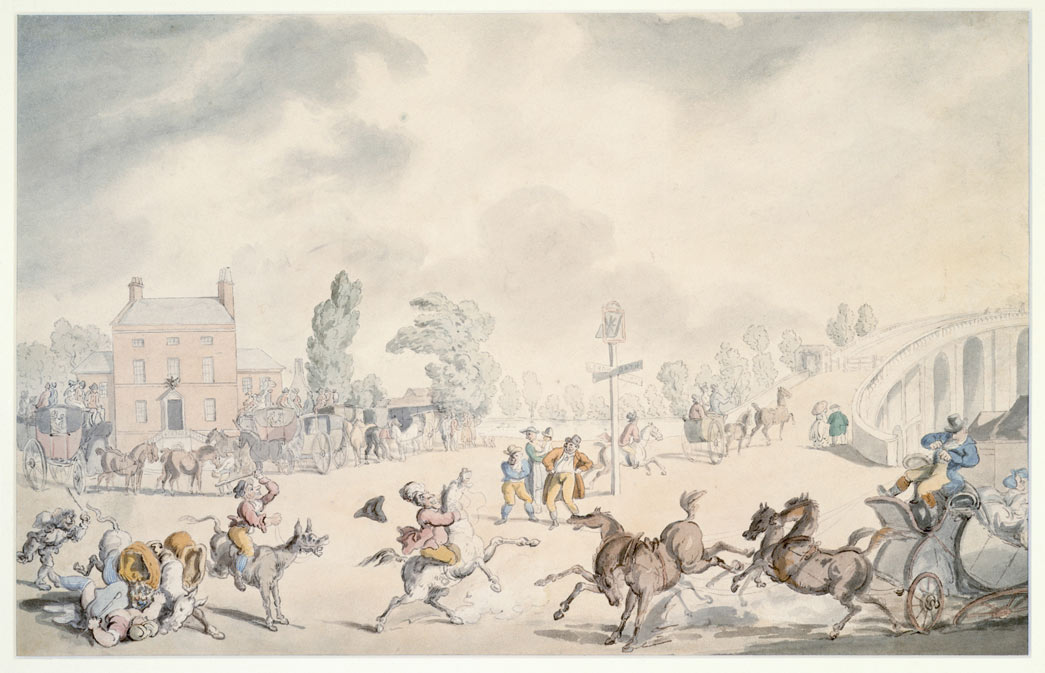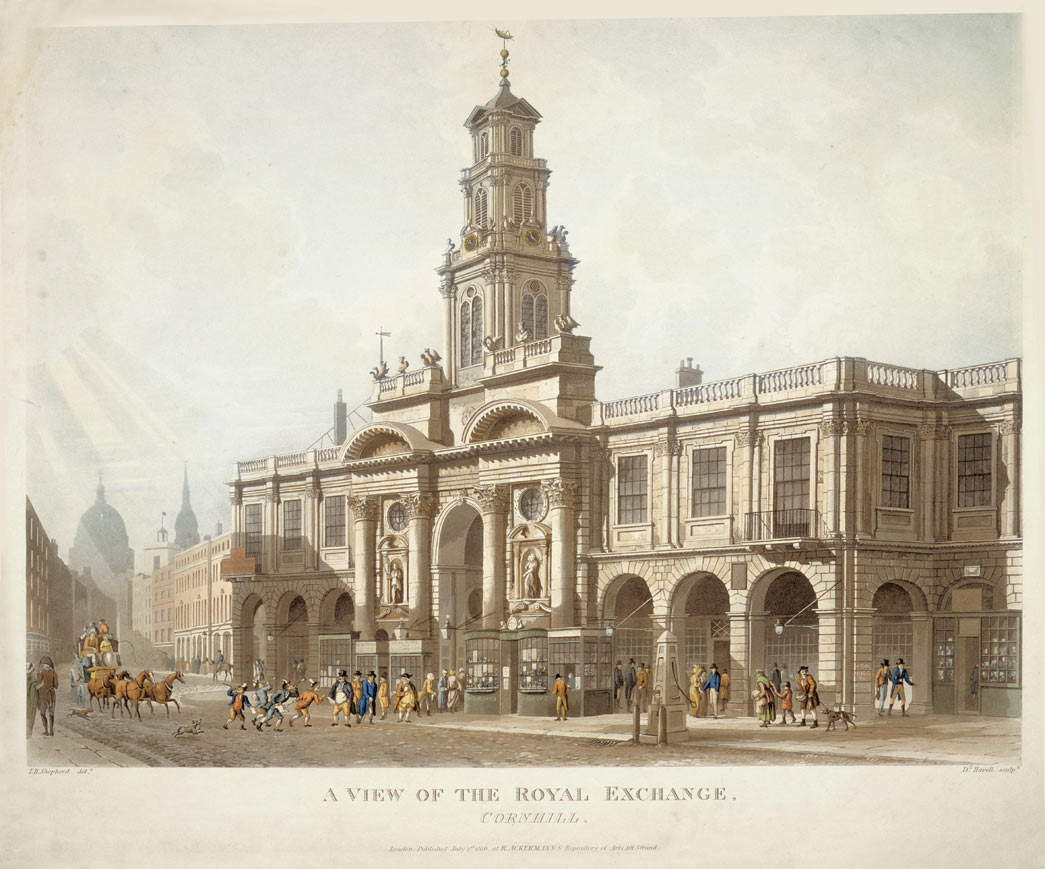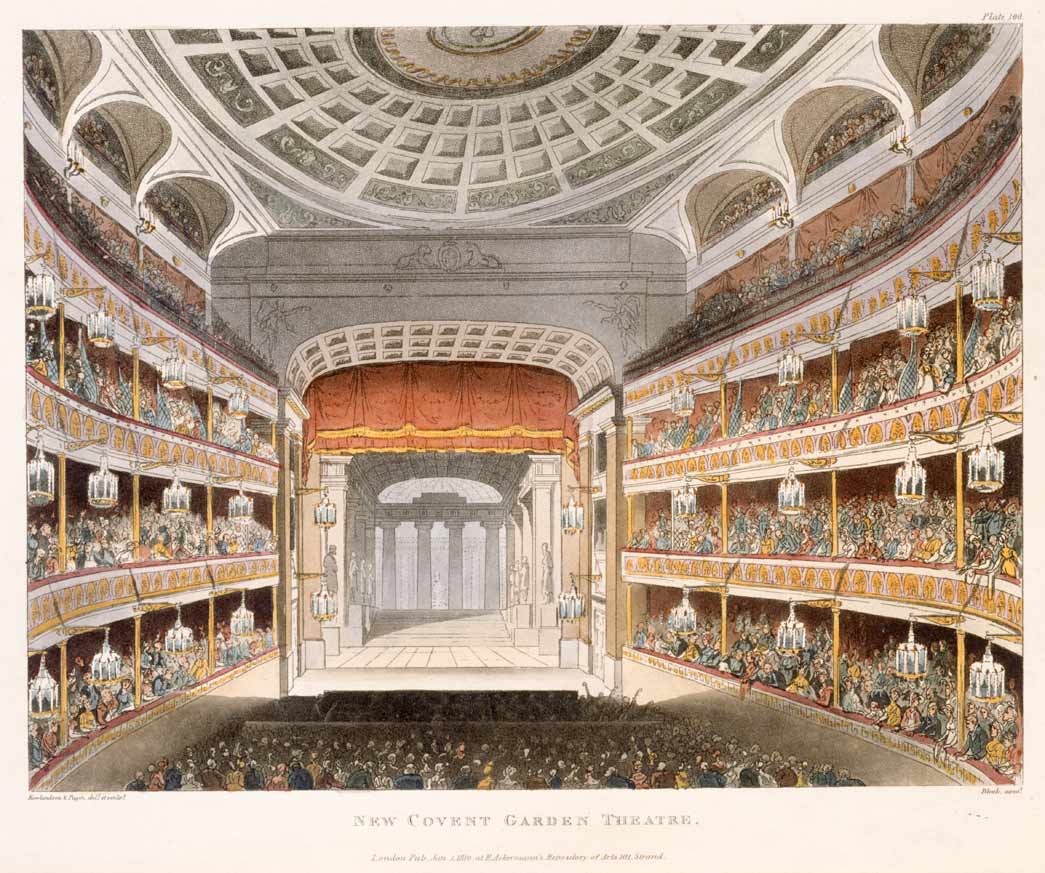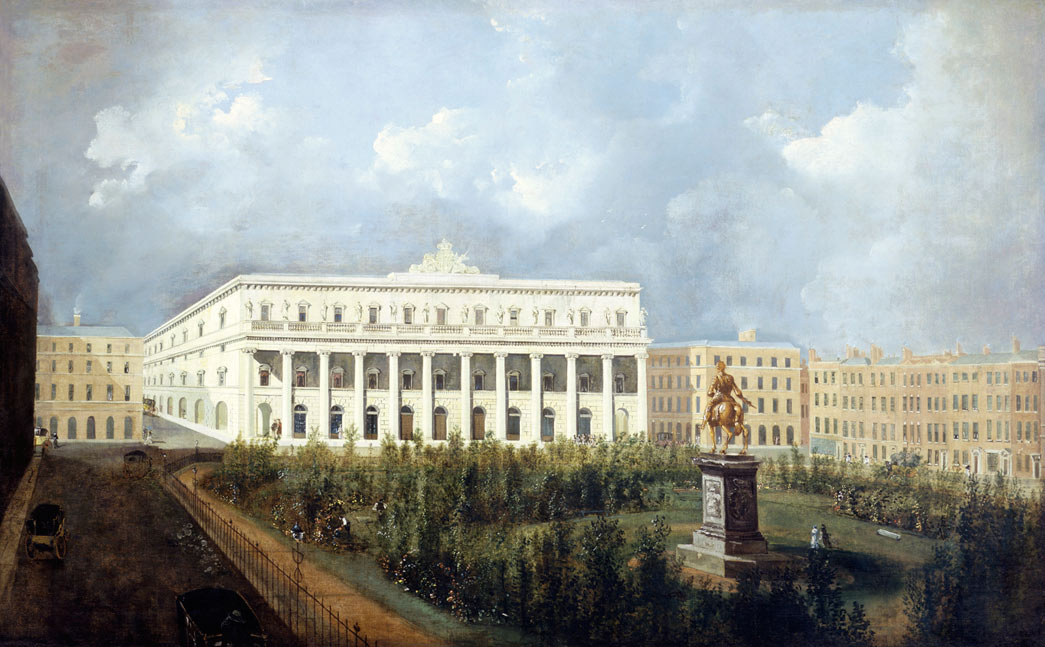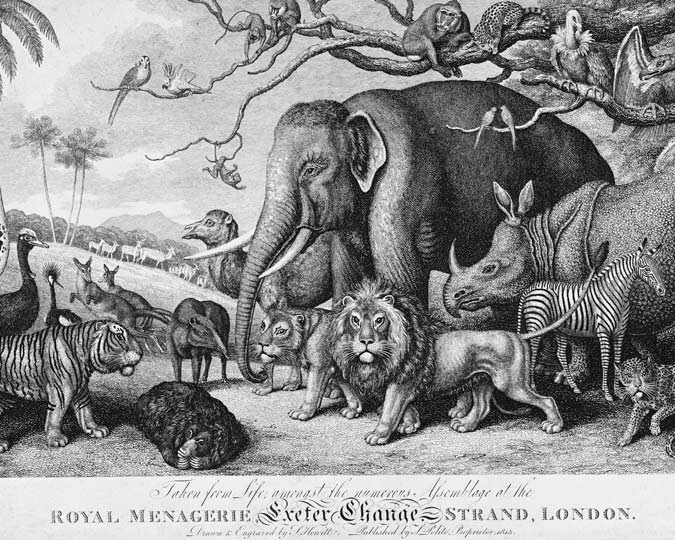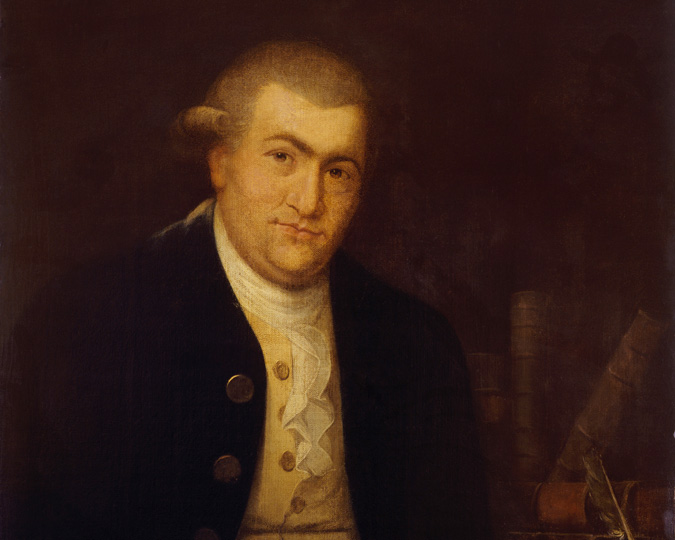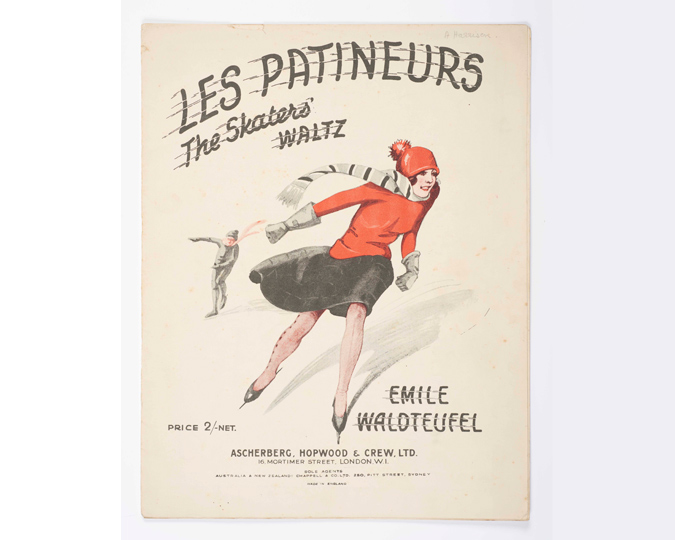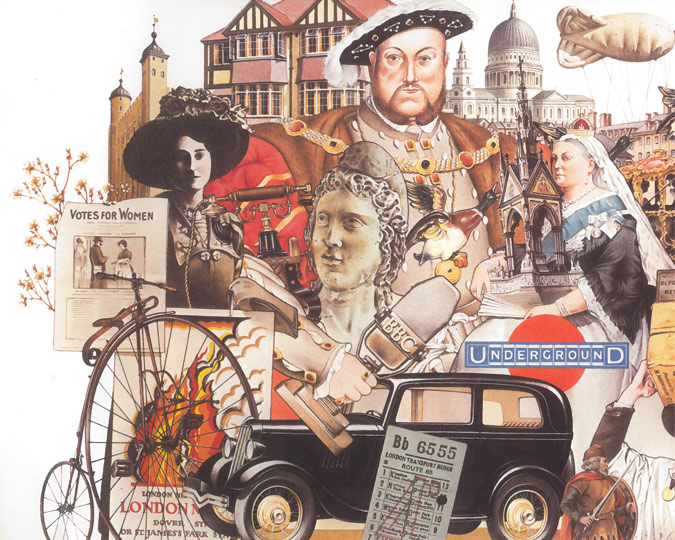The Museum of London library includes an unpublished diary by Elizabeth Chivers, a resident of Regency-era Bath. Elizabeth describes a whirlwind twenty-day family trip to London in spring 1814. Elizabeth, 28, and her sister Sarah, 26, seem to have visited almost every possible London landmark. We've transcribed her account and illustrated it with images of London from our collections.
Day 1: Bath to Newbury (Monday 14 March 1814)
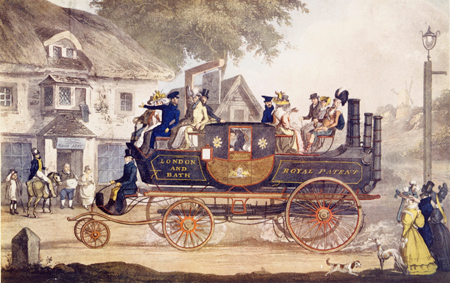
Detail from The New Steam Carriage, 1828
Just a few years later Elizabeth could have traveled from Bath to London by steam-carriage at a speed of 14 mph. The radical new invention proved commercially unpopular and the service closed in 1832. Print, ID no. A8010
On the 14th of March 1814 about 9 o'clock in the morning myself and sister set off with my Uncle from Bath to London, his own carriage and horses convey'd us to Devizes we passed thro' Melksham where there has lately been discovered a Spring the water of which is of a similar nature to that at Cheltenham. [Melksham Spa was discovered in 1813.] We drove to the Bear Inn at Devizes, from which place we proceeded post to Marlborough, where at the noble Castle Inn formerly the residence of the Duke of Somerset [now part of Marlborough College] we changed horses and then went on passing over Marlborough Forest which is Lord Bruce’s park [Savernake Forest] to Hungerford where we again changed and had a pleasant ride to Spinham land [Speenhamland] which is at the end of the town of Newbury in Berkshire. We arrived there soon after five o'clock and in little more than half an hour set down to an excellent veal cutlet which we enjoy'd very much, and a glass or two of wine with some fine Newbury apples were very acceptable. We retired to our lodging rooms soon after ten which with good Beds we found extremely comfortable.
Day 2: Reading to Covent Garden (Tuesday 15 March 1814)
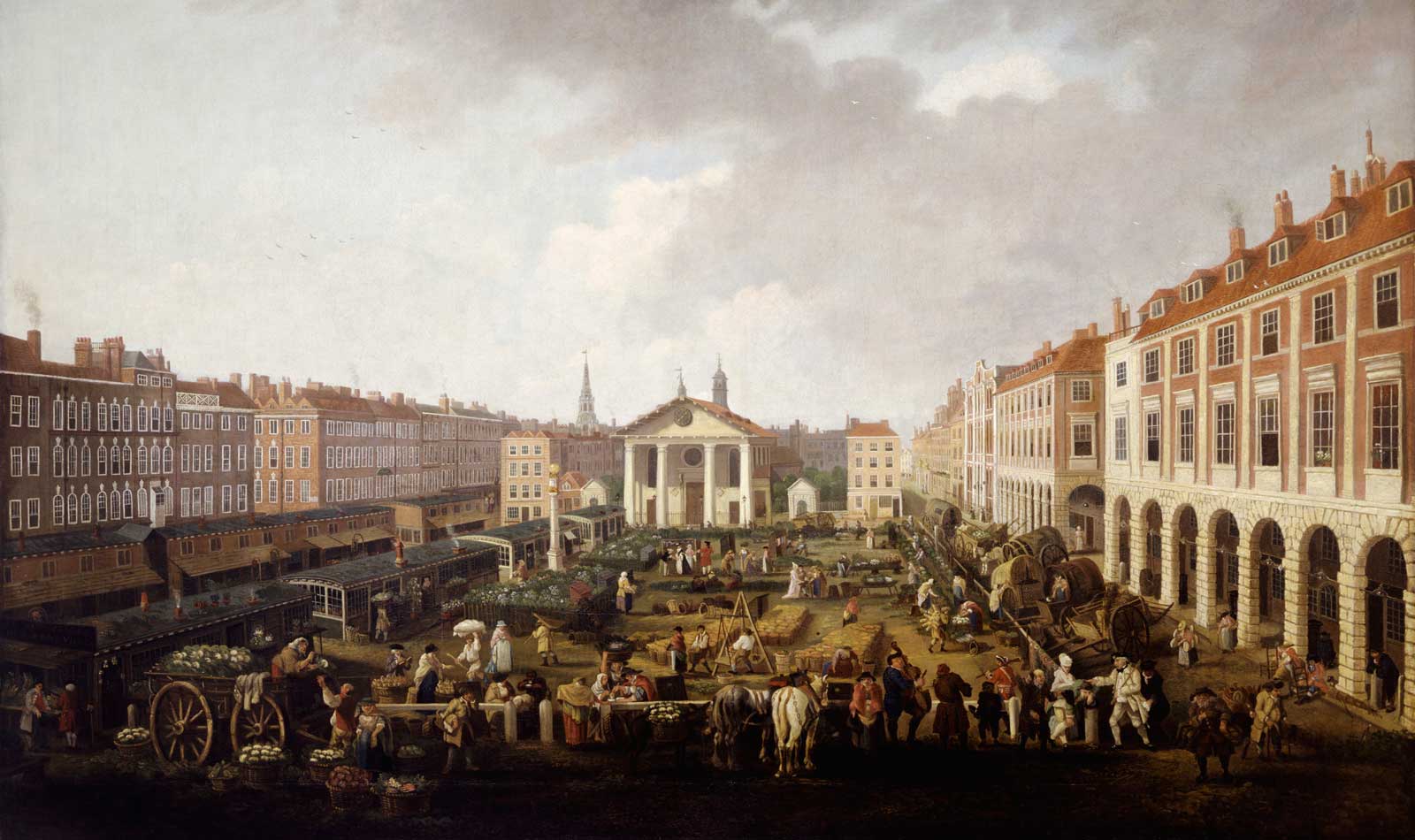
A Perspective View of Covent Garden, c.1800
A bird's eye view of Covent Garden, looking west towards St Paul's church. King Street, where Elizabeth stayed, is north of the church. ID no. A9090
We then seated ourselves in another Chaise, which soon convey’d us thro Twyford to Maidenhead Thicket and on to the Sun at Maidenhead. We had hire [of] fresh horses which very soon drew us across the Thames over Maidenhead Bridge. On our right we saw the Village of Bray which reminded us of the old popular song the Vicar of Bray. About three miles further on, the Royal palace of Windsor made its appearance. We had for some time a distinct view of it, and also of Eaton [Eton]. We passed thro Salt Hill, Slough and Colebrook where the counties of Berkshire and Middlesex divide. We went thro Longford, changed horses at Cranford Bridge and left the Village of Harlington about a mile on our left which parish the late Rev’d Thos. Chivers was Rector of.
We passed over Hounslow Heath which is notorious for the numbers of rob[b]eries formerly commit[t]ed upon it. Thro Hounslow I saw the grand entrance to the Duke of Northumberland’s Palace, Sion [Syon] House, went thro Brentfort [Brentford] where we had a fine view of the King’s Gothic Palace Kew, and Kew Bridge, we next came to Turnham green; Hammersmith and passed Kensington Palace and gardens on our left, went thro Hyde Park saw the Serpentine River and soon came to Hyde Park corner. We drove down Piccadilly passed Hatchet[t]s Hotel White Horse Cellar and arrived at Godfreys Rainbow Coffee House & Hotel, [nos. 4-5] Kings Street, Covent Garden about a quarter past five after a safe and pleasant journey.
We were shown into the very comfortable appartments which my Uncle had wrote to engage which consisted of a very neat Drawing Room & lodging & dressing room adjoining for us and an excellent lodging room for himself. After making a good dinner and drinking tea at eight we retired to rest, soon after ten.
Day 3: City sightseeing & charming cheesecake (Wednesday 16 March 1814)
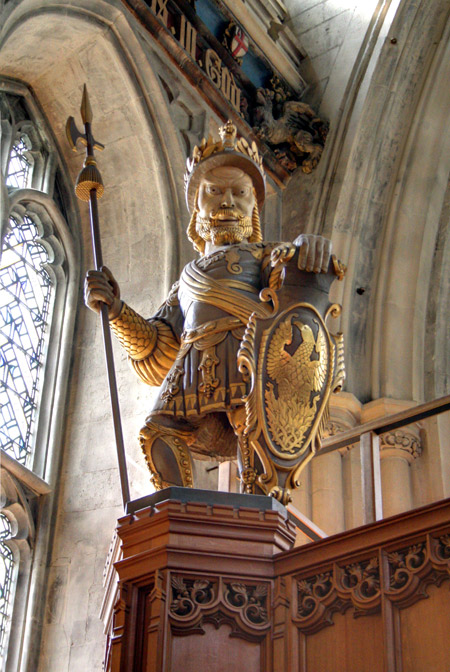
Statue of Magog in the Guildhall, 2011
Legendary giants Gog and Magog are part of London mythology. The 17th century versions seen by Elizabeth Chivers were destroyed in the Blitz. Image copyright Ian Visits, BY-NC.
The next morning our third day we commenced our walks about eleven, we began with viewing Covent garden market, Covent garden Theatre, Drury Lane Theatre, Bow St. public office, New Church Strand, Somerset House, St. Clements church, Temple Bar, Black Fryers bridge, St. Pauls, Bow church, Cheapside, Gild Hall, and the two giants Gog and Magog. We next saw the Mansion House, the Bank of England, and the Royal Exchange, called on Mr. Dawes Angel court, Throgmorton Street and on M… Bond’s change alley. We next saw the general post office, the Monument, London Bridge, Billingsgate fish Market, the ruins of the Custom house, the Tower, Tower hill and a house once the residence of our late Uncle Chivers in Tower Street, also the house the friend Finch lived in where my Father and Mother first became acquainted in Fenchurch St.
We saw Leadenhall market then came to Birches the pastry cook’s* where we eat a charming cheese cake in Cornhill, saw Mr Wilm. Chivers’s old house in Newgate Street, Newgate and the old Bailey sessions house, and Saracen’s head Snow Hill, Fleet Market, St Andrew’s church Holborn, where my Father and Mother were married, and a house my Uncle liv’d in when he resided in London in Holborn no: 307. Also a house of his no. 5 Featherston buildings. We took a view of Grey’s Inn, Greys Inn and Lincoln’s Inn Fields, and arrived at the Rainbow at half past four to dinner, had tea at seven in the evening, a hit of Back Gammon at eleven retired to rest.
*[Samuel Birch 1757-1841, politician, playwright and pastrycook. Son of Lucas Birch, who carried on the business of a pastrycook and confectioner at 15 Cornhill. Samuel Birch was Lord Mayor from 9 November 1814.]
Day 4: "As I was going by Charing Cross…" (Thursday 17 March 1814)
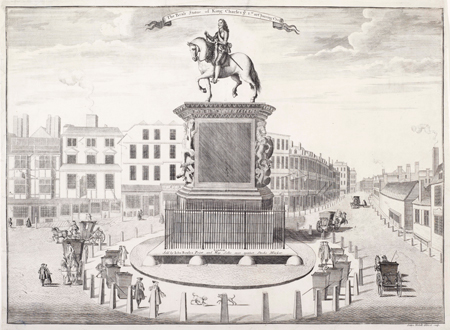
The statue of King Charles I at Charing Cross, 1755
Engraving by John Bowles. ID no. A16220
Our fourth day’s walk we began with viewing Northumberland House, Charring Cross and the black man on the black horse and the golden crop. [This is a reference to the equestrian statue of Charles I, which features in an English nursery rhyme.] We next came to the horse guards and the Admiralty saw the Telegraph, on the top, White Hall, Westminster Abbey Parliament House, Westminster Hall Westminster Bridge, St Georges Fields, Free Masons Charity School, Kings Bench Prison, Friends meeting house, White Hart court, Batson’s coffee house, sat down half an hour at the Auction Mart, saw the Temple and Temple gardens, called at Twinings great Tea & Chocolate Warehouse, Strand, walked on the Adelphi terrace from which there is a grand view of the Thames, and a part of the noble bridge now building. We passed Garrick’s widow’s house on the Adelphi Terrace. We got home to dinner at four, in the evening went to Covent Garden Theatre saw Artaxerxes, and Love Law & Physic. [These are respectively an opera by Thomas Arne and a farce in two acts by James Kenney.]
Day 5: "Such a succession of noble squares" (Friday 18 March 1814)
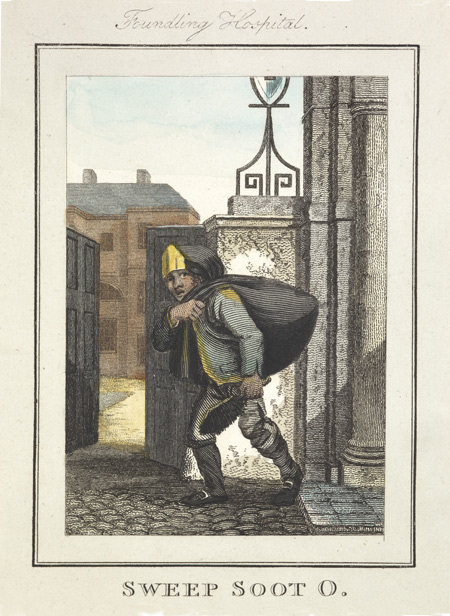
Image of a chimney sweep outside the Foundling Hospital, 1804
Print, William Marshall Craig. Orphaned boys were often apprenticed to chimneysweepers. ID no. 35.96/13
Our fifth day’s march we began with seeing Leicester Fields, Carlton House, St James’s Square. My uncle called on the Duke of Norfolk, we next saw St James’s Palace, the Queen’s Palace, Bond Street, Berkeley Square and Thomas’s Hotel*, Grosvenor Square, Portmans Square, Manchester Square, Cavendish Square. In Grosvenor Square Lord Fitzwilliam has a noble mansion and there are several other noblemen’s houses in this fine square. We now proceeded to call upon an old friend of my Uncles, Mrs Ba[ker] at Camden Town who we were disappointed in not finding at home.
Saw a noted house called the Adam & Eve [tea gardens] at St Pancras, the smallpox hospital [at St. Pancras], the Foundling Hospital, Brunswick Square, Queen’s Square, Russell Square, Bloomsbury Square and Red Lyon Square, thro Long Acre, and home to dinner about half past four. We were much pleased with what we had this day seen such a succession of noble squares quite astonished us. In the evening tea, backgammon, and to bed at eleven.
*[25 Berkeley Square was adapted for a hotel by Tycho Thomas in 1796. It was also known as Bailey’s Hotel.]
Read more extracts from the diary of Elizabeth Chivers.








